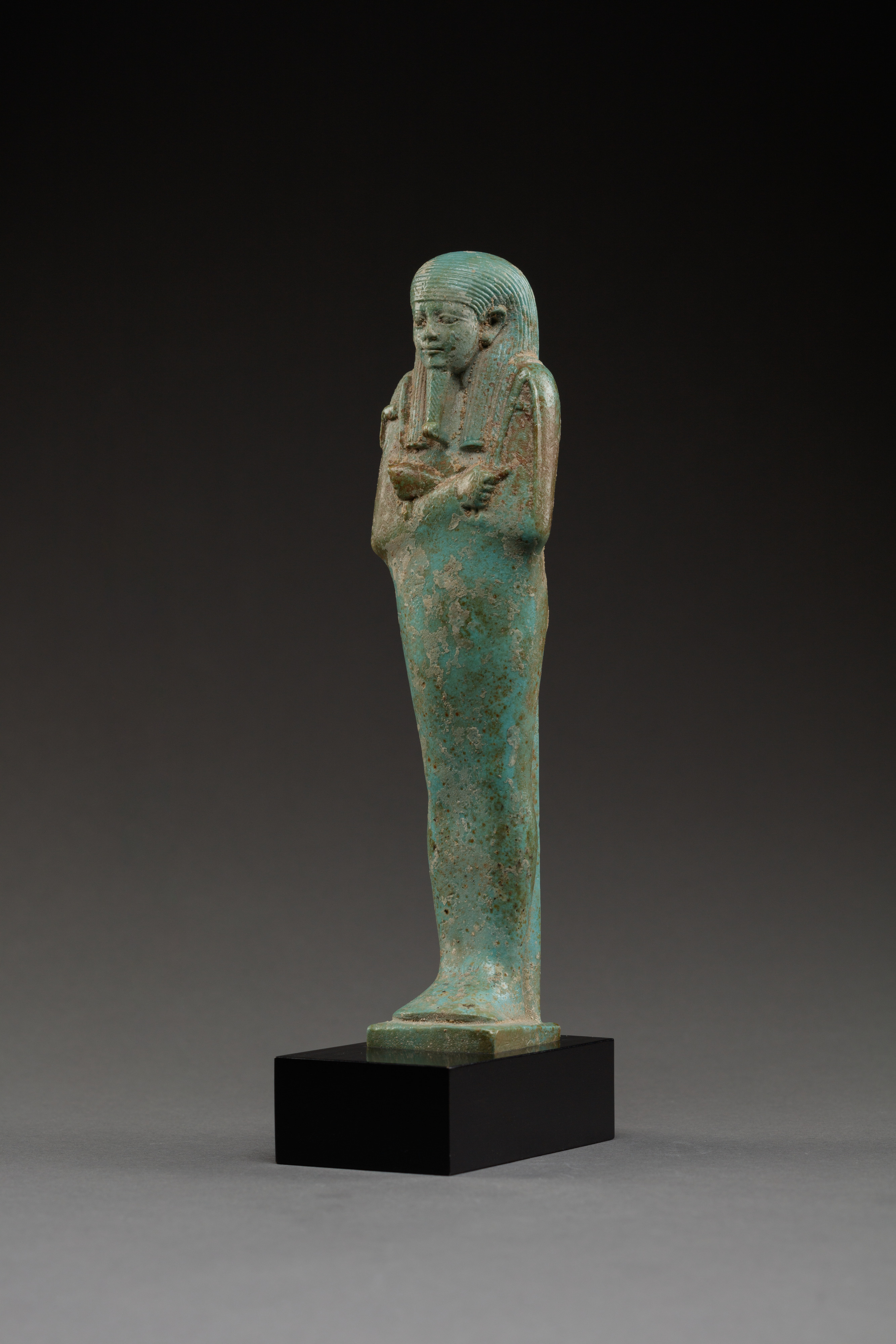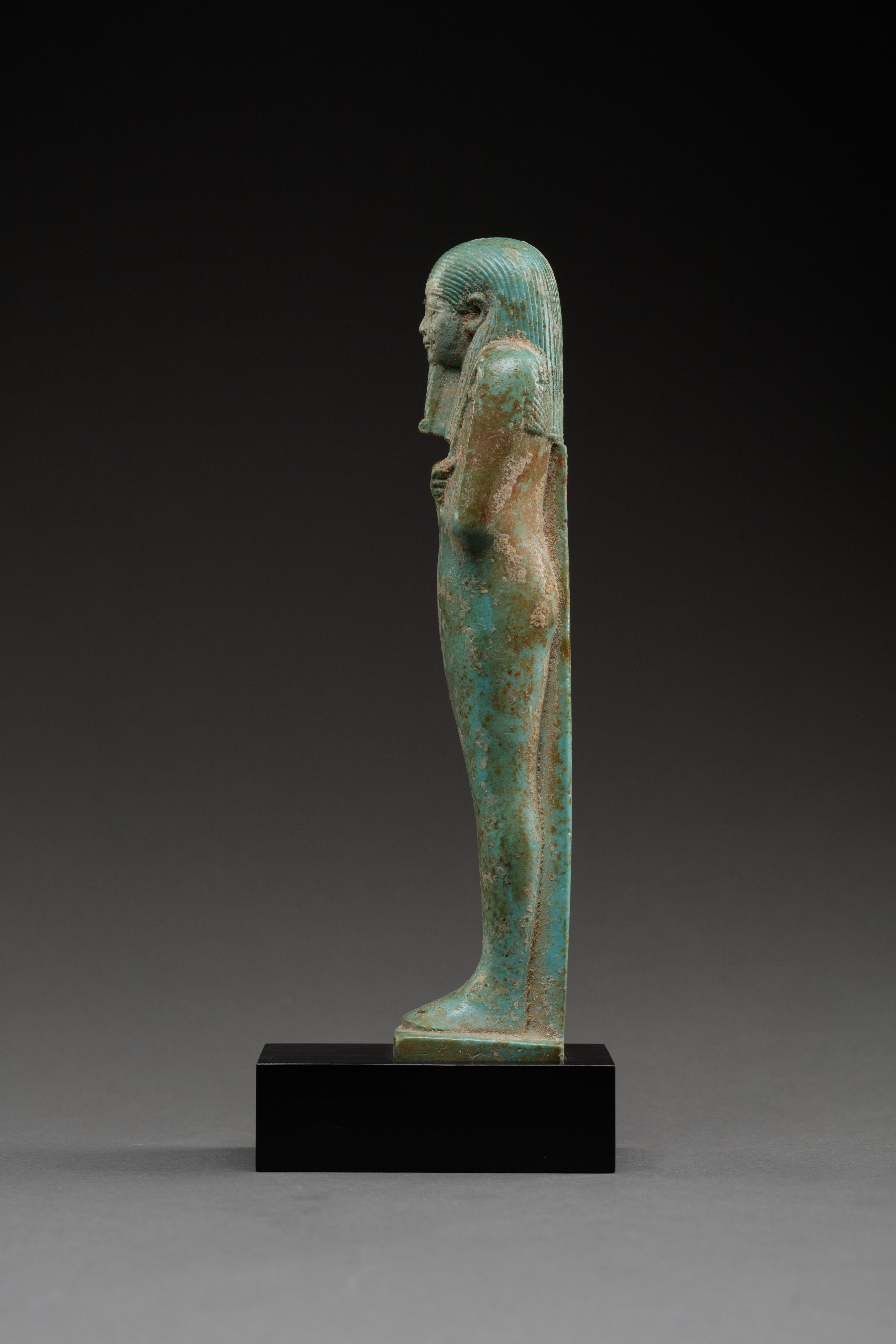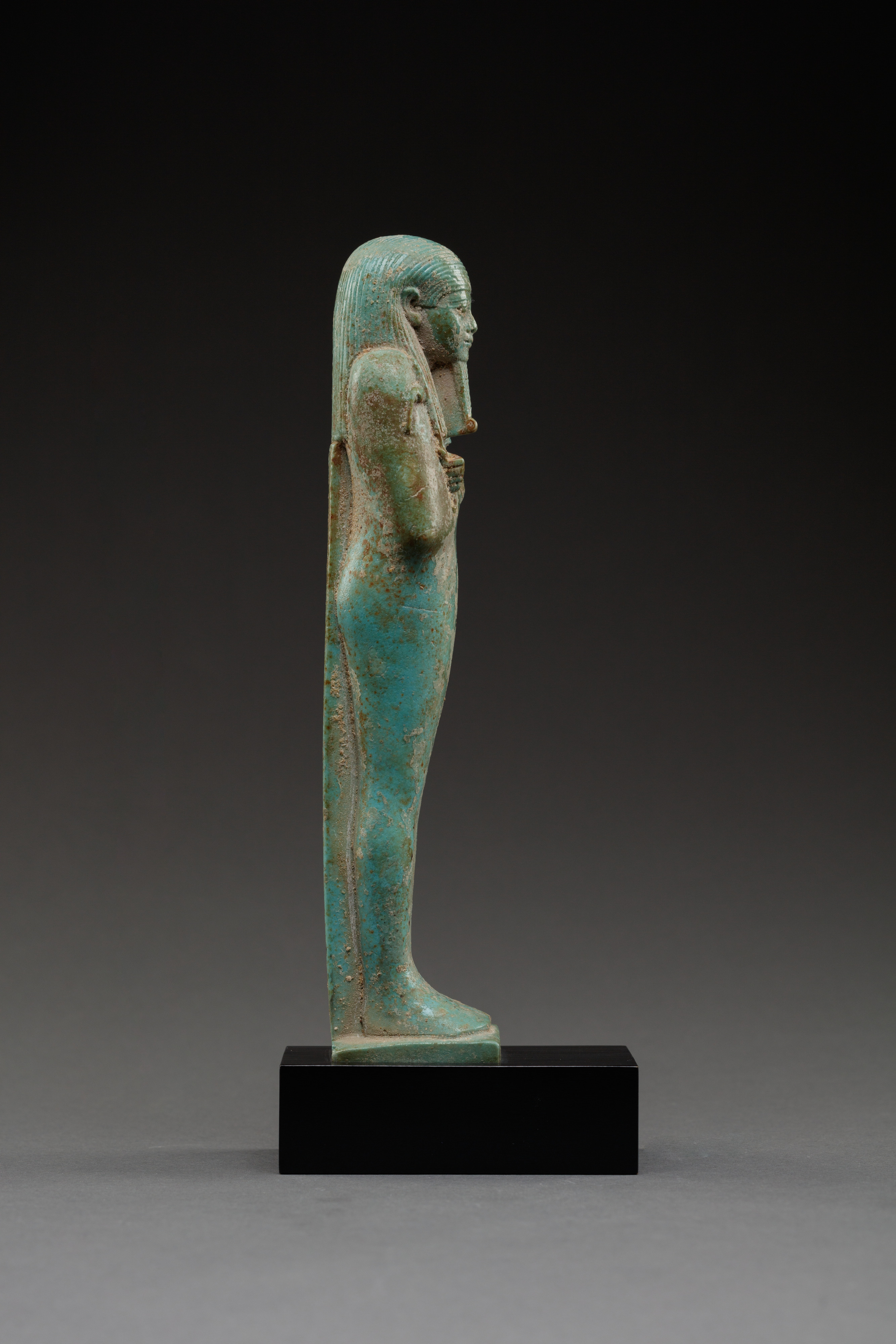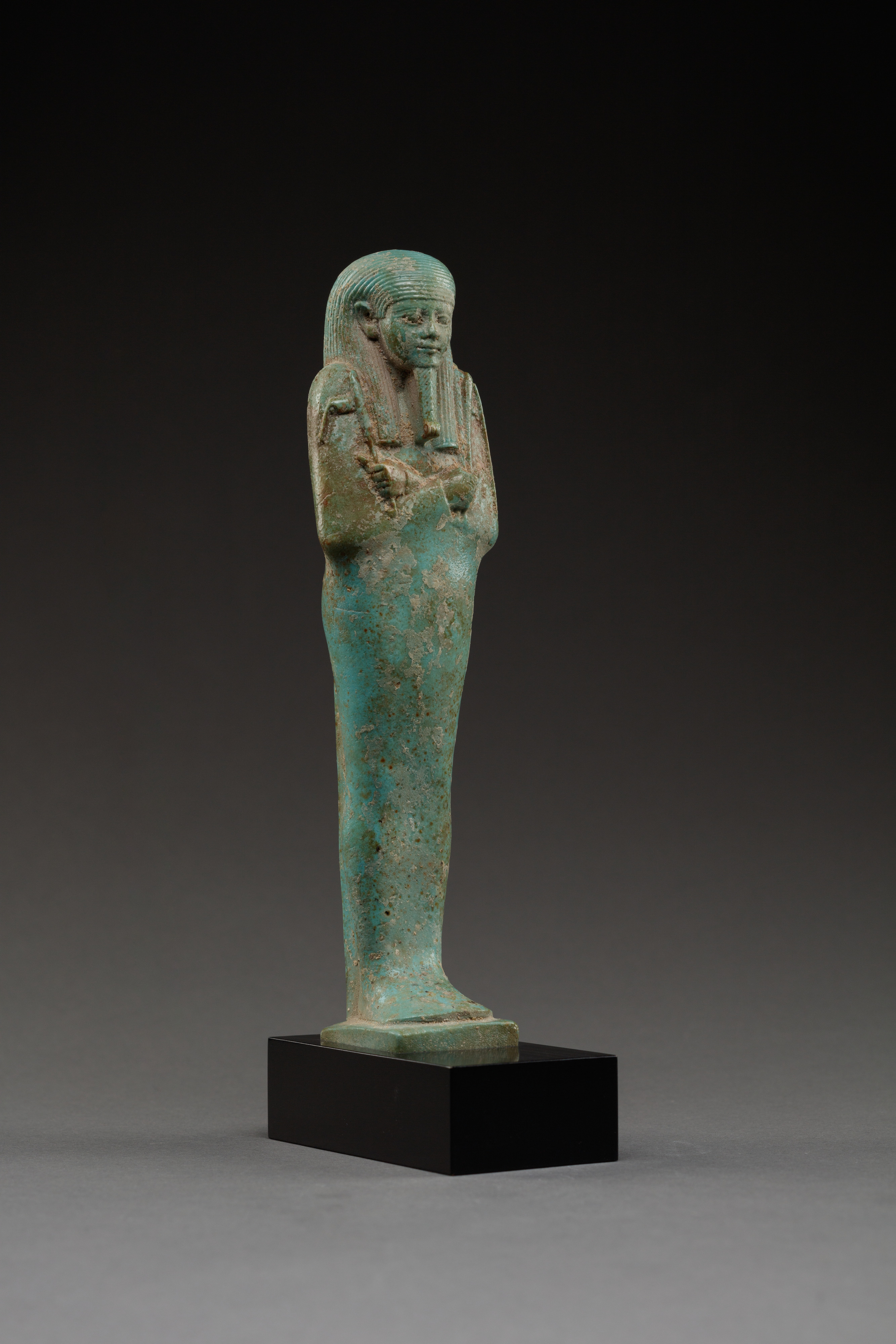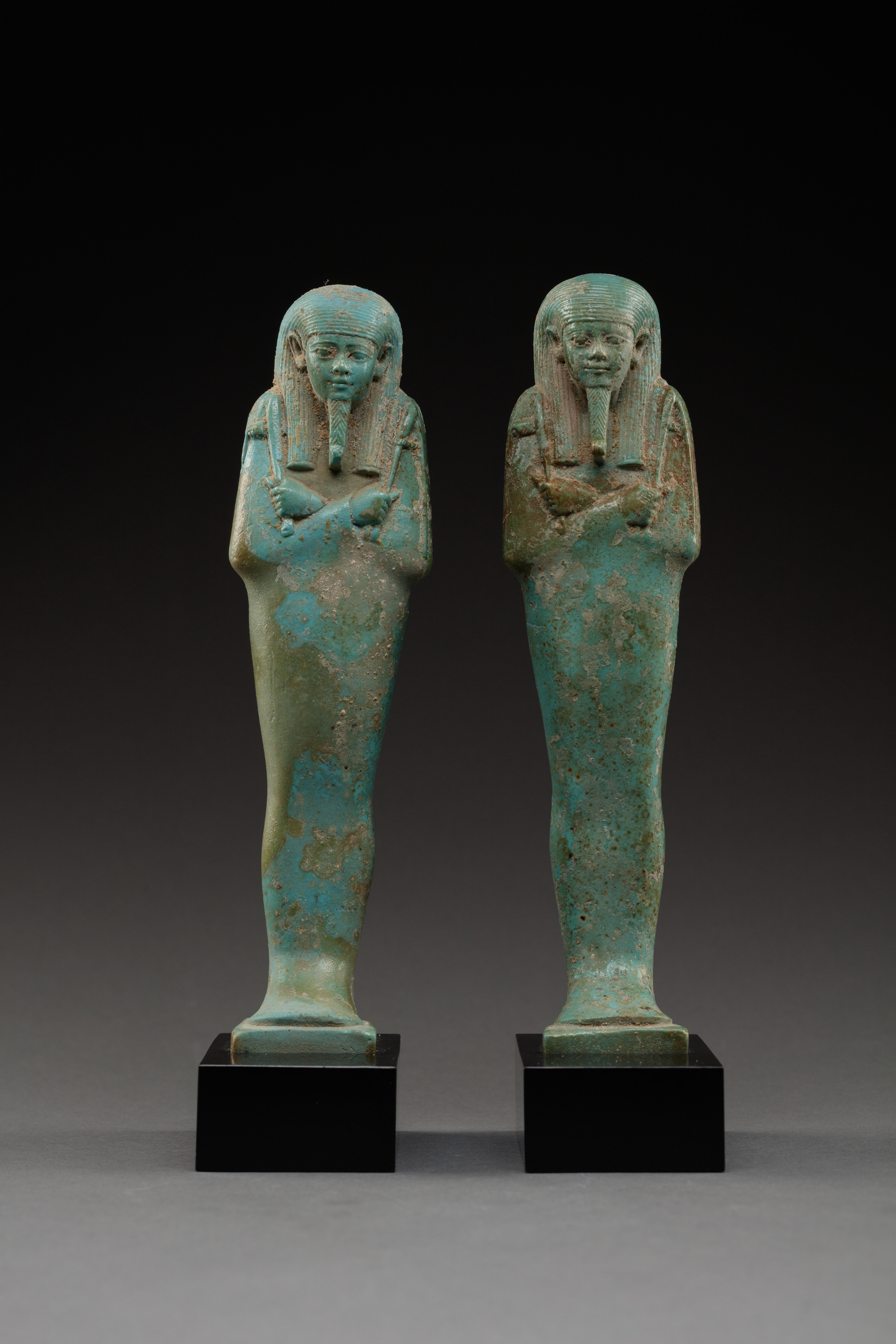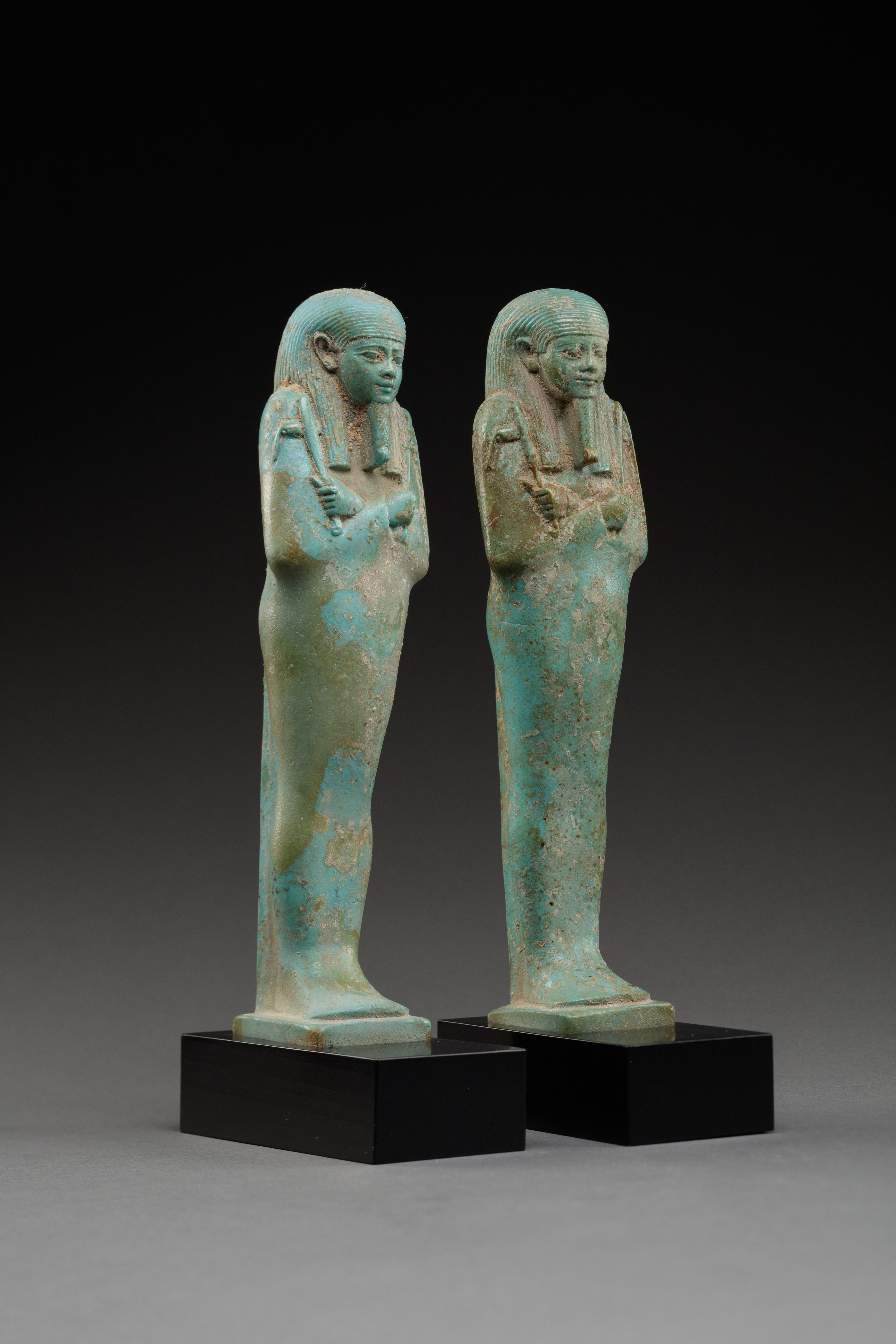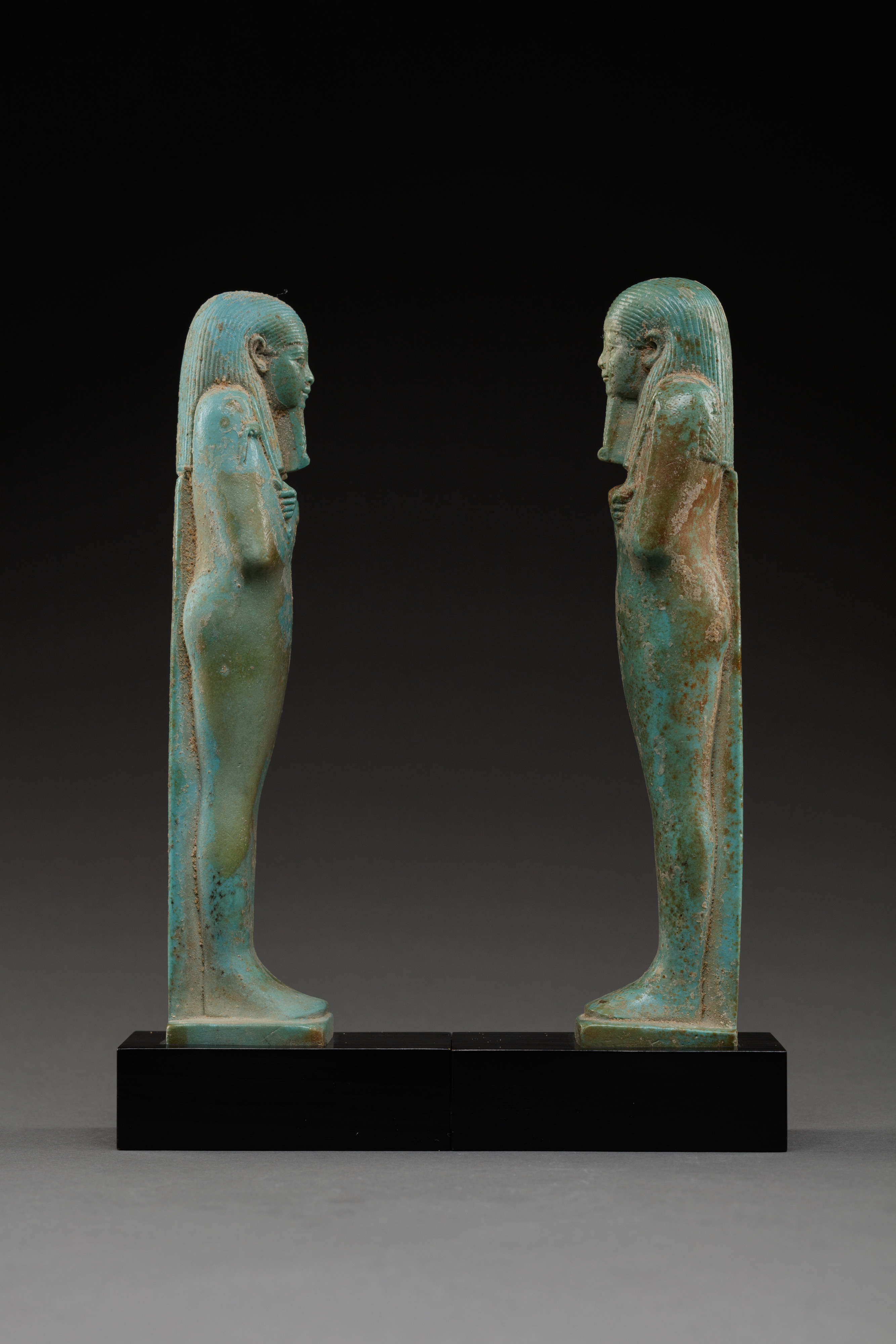Shabti of the Overseer of the Fleet Hekaemsaf
Late Period (Saite)
Discovered in 1903 in the tomb of the Overseer of the Royal Fleet, Hekaemsaf, this shabti, one of a set of 401, exemplifies a high point in the manufacture of such funerary figures. The mummiform shabti stands on a low pedestal; this, and the shallow pilaster behind echo the form of a statue. The long wig and curled beard are markers of divinity, indicating that Hekaemsaf has been transformed into a being capable of participating in the afterlife. The agricultural tools he holds—a pick in one hand, a hoe in the other, and a basket slung over his back—prepare him to carry out labor in the afterlife should he be called on to do so by the gods.
Hekaemsaf’s tomb was a deep shaft with the main burial chamber and two smaller chambers for family members at the bottom. The subsidiary chambers had been looted by ancient tomb robbers, but Hekaemsaf’s rich burial was intact. The mummy of this high official, whose titles included Seal-Bearer of the King of Lower Egypt, Controller of the Palace, Overseer of the Storehouse of Refreshments, Overseer of the Double Treasury of the Residence, and Overseer of the Scribes of the Great Prison, had been adorned with a gold mask, a bead net, and other trappings of gold, lapis lazuli, and amazonite. This had been placed inside an anthropoid wooden coffin that was in turn nested inside a massive limestone sarcophagus. The shabtis were displayed to the right and left of the door, on wooden plinths that had rotted away. Additional burial equipment included canopic jars of travertine, as well as over a hundred amulets and other jewelry.
For additional shabtis of Hekaemsaf, see 2021.41.84 and 16.9.1.
Due to rights restrictions, this image cannot be enlarged, viewed at full screen, or downloaded.
This artwork is meant to be viewed from right to left. Scroll left to view more.


